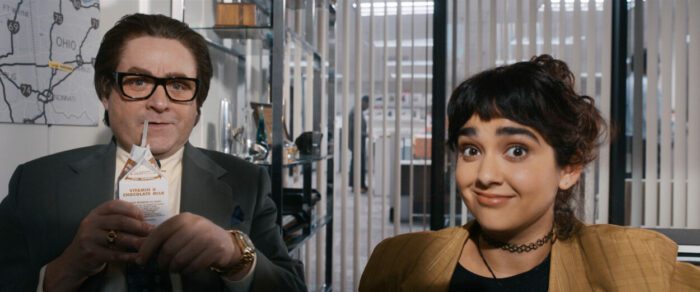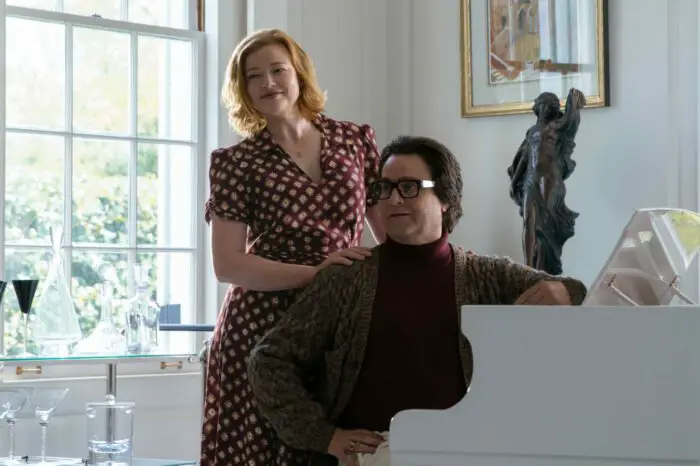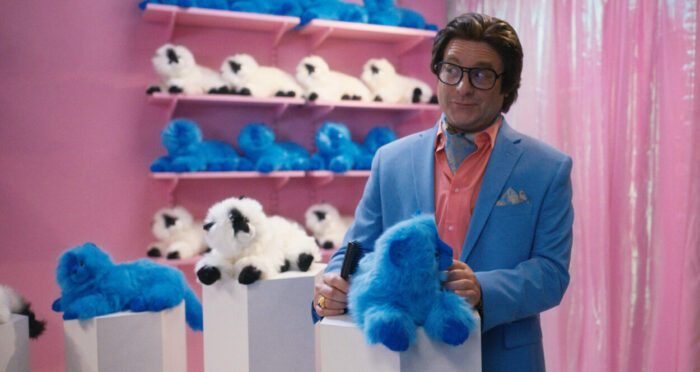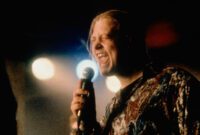EDITOR’S NOTE: This piece was written during the 2023 WGA and SAG-AFTRA strikes. Without the labor of the writers and actors currently on strike, films like The Beanie Bubble might not exist.
A nice thing about watching movies these days is that you can enjoy them any way you want—in theaters, from home, one at a time, bingeing, or just having something on in the background and not paying attention to it all. Kristin Gore and Damian Kulash’s latest film, The Beanie Bubble, is all of these—especially that last type.
At this point in the year, many people might take a look at The Beanie Bubble and say, “Why not?” and sit down to watch it “just because.”
For whatever reason, the film industry has decided that people need to see more nostalgia-driven movies about games (Tetris, The Super Mario Bros. Movie) and toys (Barbie) and other products we couldn’t live without at some point in time (Blackberry, Air, Flamin’ Hot). So what’s one more?
The Beanie Bubble, now streaming on Apple TV+, is based on the 2015 book The Beanie Baby Bubble: Mass Delusion and the Dark Side of Cute by Zac Bissonnette. Like most of the previously mentioned biopics and corporate “kinda-pics,” this movie follows a famous craze’s rise-and-fall origin story.
This time it’s H. Ty Warner’s (Zach Galifianakis) colorful, collectible, soft and small (under)stuffed Beanie Babies. The story, however, is told through the narratives of three women who helped the multi-billion-dollar business reach its peak in the 1990s: Robbie Jones (Elizabeth Banks), Maya Kumar (Geraldine Viswanathan) and Sheila Harper (Sarah Snook). (The directors gave the characters new names because of legal issues and the fact that they made significant changes to each woman’s portrayal.)
It’s hard to know what actually happened in real life unless you were there, wrote the book, or, like me, skimmed a few Wikipedia pages mid-movie. So, the filmmakers open The Beanie Bubble with the statement, “There are parts of the truth you just can’t make up…The rest, we did.”
The tongue-in-cheek transparency sets the tone for the based-on-a-true-story comedy-drama, similar to Cocaine Bear. (You gotta love a good ol’ Elizabeth Banks project.)
You get a sense of how bonkers people went for Beanie Babies when a trailer truck full of them crashes on the highway in the first scene, sending drivers out of their cars and into the streets on a plushie free-for-all. Backed by an uplifting score that sounds like an indie instrumental you’d hear at a contemporary Christian church, the frenzy cuts to a montage of all things nineties—The Spice Girls, Gameboys, Bush, Clinton, and, of course, more Beanie Babies.
The Beanie Bubble jumps between two timelines—one starting in 1983 and the other in 1993—to get to know the women who helped Ty grow the bubble before it burst.
Robbie’s story starts in 1983. She’s Ty’s neighbor, then his brainstorming partner, then finally his business partner (until he steals her ideas, cuts her salary and nearly removes her from the company completely). Banks shines the brightest playing witty characters whose intelligence and grandeur fuel their ambitions. Think Gail from Pitch Perfect, Effie Trinket from The Hunger Games, and Boz from her 2019 Charlie’s Angels.

Maya’s story starts in 1993 as a college intern at Ty Inc. For minimum wage, she answers the phones and keeps the stuffed display cats groomed and posed, per Ty’s meticulous request. Over the years, she finds herself more useful in computer science, marketing, finance, and basically every other business aspect that made Ty Inc. successful—including putting Beanie Babies on the internet.
Yet despite all of her contributions, Ty refused to give her the raises and promotions she deserved, which is still a very real reality for women of color today. Whether you know a Maya or are a Maya, Viswanathan portrays this character in a way that validates her realistic and relatable experiences.

Sheila also meets Ty in 1993. She insists that she doesn’t date for the sake of her two daughters, but Ty still manages to wiggle his way into her family by sending the girls Beanie Baby prototypes and taking them all on rollerskating dates. Snook and Galifianakis have good chemistry between them, making their picture-perfect family believable. But it does take some convincing throughout the movie to get there.

Everything about Ty is so precise and peculiar that watching how Galifianakis turns himself into this Wall Street Willy Wonka is impressive. As the movie jumps between the three women’s storylines, you get a glimpse of Ty’s dark and damaged sides at his most extreme moments in life. For a character who is a seemingly controlled control freak, Galifianakis hit the mark.

The Beanie Bubble isn’t necessarily a risky film like some biopics can be. However, the filmmakers did make a tricky move when arranging the timeline. All three narratives move forward in time, but the one that began ten years earlier eventually catches up with the other two storylines. And here, things get muddled to the point where you can’t exactly tell if it’s supposed to be someone’s flashback or another person’s present.
Until this point, the film used 80s songs and clips from Clinton’s impeachment to help distinguish the two time periods. And if that weren’t explicit enough, the year would also flash onto the screen to announce the time jump. Having both aides felt a bit unnecessary, but eventually, the numbers go away once Robbie, Maya and Sheila’s stories collide. Then you start to think, “Maybe I did need those title cards after all.”
Much like the Beanie Baby craze itself, The Beanie Bubble seems to have come and gone. The movie’s been out in select theaters and available to stream for a couple of weeks now, but the clickbaity nostalgia factor could only carry this movie so far in popularity. That’s not to say don’t watch it, but it’s okay if you still put it on and “kinda” watch it.




